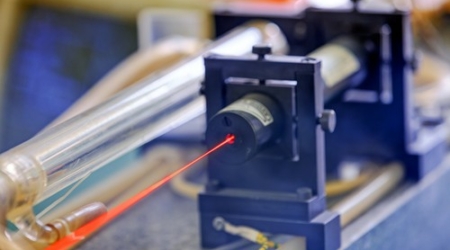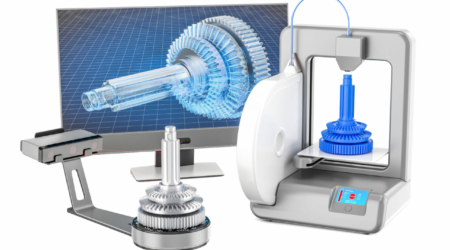In an era where technological development is advancing more rapidly than ever before, companies who wish to retain and nurture a competitive advantage in the marketplace must adapt as efficiently and effectively as possible. The manufacturing industry is a prime example of how the successful implementation of technological innovations can lead to greater vitality and longevity for a company’s performance in the wider economy.
In the modern-day manufacturing industry, the utilisation of new technological developments is helping companies to meet and exceed consumer demand in unprecedented ways. In a world where technology influences almost every aspect of our lives, consumers expect their products to be made better, and delivered faster, than ever before.
Computerised maintenance management systems
The usage of computerised maintenance management systems (CMMS) in manufacturing processes has helped to transform the industry by making the tracking of maintenance, inspections, and breakdowns of equipment on the factory floor digitised and automated. Rather than requiring an individual to walk around the factory manually checking and detailing every problem in need of attention, the computerised system provides the information in a much faster and more efficient manner.
This helps to ensure that any potential disruptions and breakdowns are tracked as they happen, or in most cases before the problem becomes big enough to cause the drop in productivity associated with lost manufacturing time.
With fewer repairs needed, lower maintenance costs due to the reduced need to completely replace machinery, and a workforce that is spending less time on system checks, there has been an overall increase in productivity on factory floors that implement CMMS technology.
The impact of big data
CMMS technology fits into the wider trend of utilising the ability of digital solutions to collect more data than ever before. Moreover, the increasing implementation of digital solutions allows different procedures within a manufacturing facility to be connected with each other, enabling the instant transfer of data across various sectors of the manufacturing process.
This aspect of modern technology is usually referred to as the Internet of Things. The concept is transforming many processes in modern life, but has been especially effective in boosting the productivity of the factory floor. Digitised systems in the manufacturing process can communicate with each other automatically, and send the aggregate of all the data collected to a single source, allowing much greater effectiveness in the analysis of company information.
For example, one digitised system on the factory floor can communicate the amount of resources being pumped into the manufacturing process, and thus allow each other system in the process to use only as much energy, time, or resources as absolutely necessary to complete the task. This automatic communication helps to reduce waste, thus increasing efficiency.
Moreover, if there are any changes to circumstances, the digital systems will communicate with each other automatically. This can all be monitored by a single operative, in a remote location, with the ability to access data and change orders with a single click of a computer mouse.
Increased specialisation of the workforce
As all aspects of our lives are moving towards a “smart” future, it is unsurprising that the manufacturing industry is no different. Not only are the products being manufactured increasingly utilising smart technology, but the processes that manufacture those products are also becoming more technologically advanced.
This is leading to a change in the make-up of the modern manufacturing workforce, and a trend that according to industry insiders is only likely to increase. Whereas in the past the vast majority of the manufacturing labour supply was comprised of blue-collar workers, the modern manufacturing employee is becoming increasingly specialised in their knowledge of the STEM fields.
New technological practices, and the increasingly efficient implementation of yesterday’s novelties, mean that manufacturing workers require a much greater knowledge of technological processes. Practices such as 3D printing and laser cutting are becoming much cheaper and more efficient, and are thus being used more and more often. This is certainly a great benefit to the manufacturing industry and the consumer, as goods can be produced much quicker, with less wastage of materials, and with much more complex designs.
The rise of increasingly advanced technological solutions designed to enhance manufacturing procedures means that traditional assembly line work practices are becoming obsolete, and in their place is stepping a brave new world of highly-skilled STEM experts.
This trend is helping to ensure that the increasingly white-collar manufacturing industry remains at the forefront of innovation and technological development, and the benefits for those involved are not merely the satisfaction of meeting and exceeding consumer demand; the average manufacturing employee is earning more than ever before, and this looks set to continue into the foreseeable future.
To learn more about how a highly technological, hyper-efficient manufacturing industry can benefit you, contact us today!









